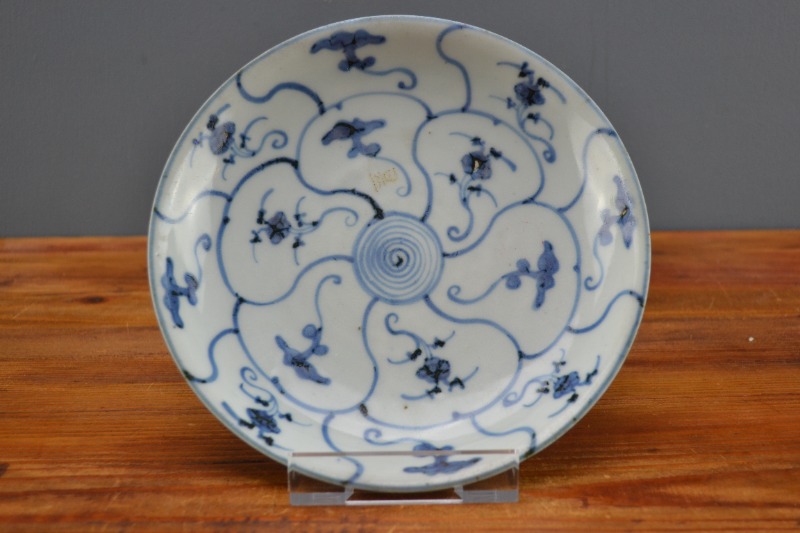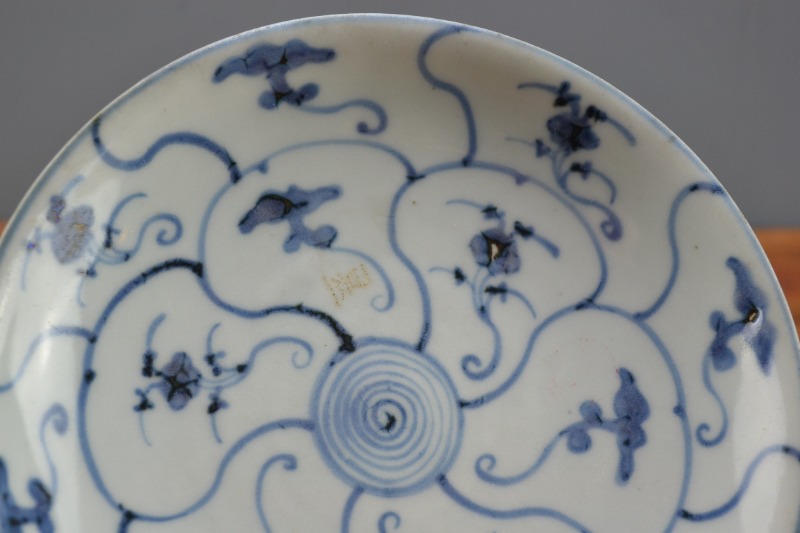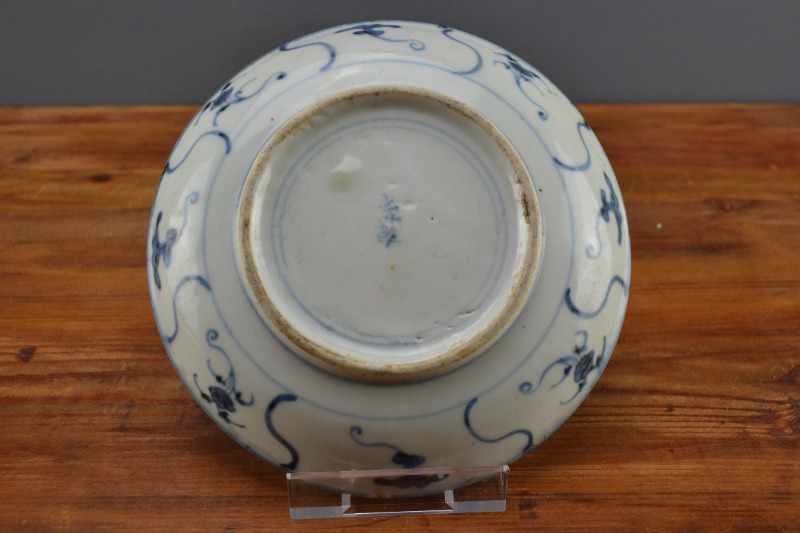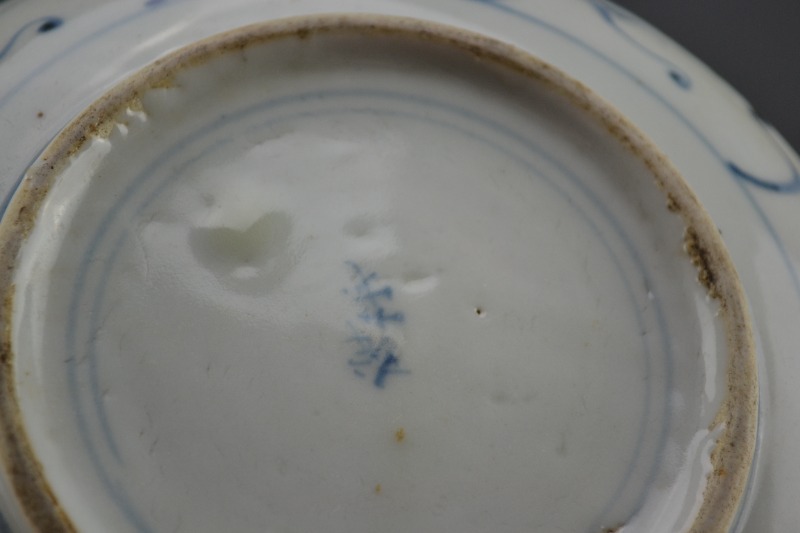Chinese Tek Sing Shipwreck Blue & White Dish, c. 1820
Age:
Circa 1820
Material:
Porcelain
Dimensions:
Diameter: 18cm
Shipping:
Standard Parcel
Price:
SOLD
A blue and white dish from the Tek Sing shipwreck that sank in 1822 in the South China Sea. In the centre is a spiral surrounded by six petal-shaped panels which are surrounded by a further eight. The panels are mirrored on the underside. In each segment is an alternating lingzhi (fungus of immortality) or flower. There is a maker’s mark on the bottom painted in blue and a braille-like owner’s mark i incised on the front.
The dish is in very good condition with one small shallow chip to the underside, not visible from the front. The glaze is worn from 177 years in the sea, giving the dish a pleasing matt finish. There are some firing imperfections such as kiln grit and indents. The original Nagel Auctions sticker is missing.
The sunken remains of the Tek Sing was discovered in 1999 by Captain Michael Hatcher, who had previously discovered the Nanking cargo in 1985. The Tek Sing ("True Star") was an unusually large junk measuring approximately 50 meters long and 10 meters wide. It set sail from Xiamen (Fujian Province) in Jan 1822, carrying an enormous cargo, which included silks, spices, and 350,000 pieces of Chinese porcelain. It was heading for Java with a crew of 200 and at least 1600 passengers when it hit a reef in the South China Sea near Belitung Island. Only 198 people survived.
The majority of the blue and white wares rescued were products of Fujian Dehua kilns. Dehua first emerged as an important export oriented production site for white/qingbai wares durng the Northern Song period. During the late Ming/early Qing period, it further improved on its white wares and finally produced the much coverted white wares known in the West as Blanc De Chine. The Tek Sing‘s recovered cargo was auctioned at Nagel Auctions in Stuttgart, Germany in November 2000.




